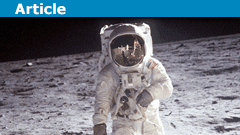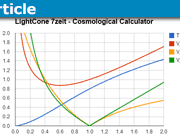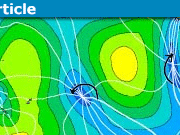Last Man On The Moon | Look Back at Previous Missions
On December 11, 1972, astronaut Eugene Cernan became the last person to walk on the lunar surface, marking the conclusion of NASA’s Apollo missions—a pivotal chapter in space exploration history that saw humanity push the boundaries of science and engineering to unprecedented levels. The Apollo program remains a testament to what human ingenuity can achieve and has inspired generations of scientists, engineers, and dreamers ever since.
Table of Contents
The Origins of Apollo
The Apollo program, conceived in the early 1960s, was a direct response to the space race between the United States and the Soviet Union. On May 25, 1961, President John F. Kennedy delivered a powerful speech to Congress, expressing the desire to send an American safely to the moon and return them to Earth before the decade was out. This ambitious goal captured the imagination of the world and set the stage for a monumental period in scientific achievement.
The Apollo program began in earnest, and by July 16, 1969, the world watched as Apollo 11 lifted off from Kennedy Space Center with Neil Armstrong, Buzz Aldrin, and Michael Collins aboard. This mission culminated in Armstrong and Aldrin stepping onto the lunar surface, with Armstrong famously declaring, “That’s one small step for man, one giant leap for mankind.” Their landing marked the first time humans had set foot on another celestial body, and it would forever change our understanding of space and our place in it.
Apollo 11: The First Lunar Landing
Apollo 11 was a mission characterized by firsts. Neil Armstrong and Buzz Aldrin descended to the lunar surface aboard the Lunar Module, named “Eagle,” while Michael Collins remained in lunar orbit in the Command Module, “Columbia.” On July 20, 1969, Armstrong became the first human to step onto the moon, followed by Aldrin shortly thereafter. The pair spent more than two hours walking on the surface, collecting 47 pounds of lunar rock and soil samples and conducting scientific experiments.
One of the experiments conducted during the mission was a solar wind experiment, which allowed scientists to study the properties of particles emitted by the Sun. Armstrong and Aldrin also deployed a laser reflector to accurately measure the distance between the Earth and the moon, a crucial metric that continues to provide valuable data today. Another experiment involved setting up a seismometer to detect “moonquakes,” providing insight into the moon’s geological activity. Millions of people worldwide watched the events live on television, as the astronauts erected the American flag and conducted their tasks on the desolate lunar landscape.
On July 24, 1969, Apollo 11’s crew safely returned to Earth, splashing down in the Pacific Ocean near Hawaii, where they were recovered by the USS Hornet. This successful mission was not only a victory for the United States but also a symbol of what humanity could achieve through perseverance, technology, and the will to explore.
Apollo 12: Precision Landing
Apollo 12, launched on November 14, 1969, was the second manned lunar mission. Commanded by Charles “Pete” Conrad, with astronauts Richard Gordon and Alan Bean, this mission demonstrated significant improvements in the precision of lunar landings. Conrad and Bean landed just 600 feet from the Surveyor 3 probe, an unmanned spacecraft that had landed two years earlier. This precision landing was a major milestone, showcasing NASA’s improved understanding of lunar navigation and landing techniques.
While Gordon remained in lunar orbit, Conrad and Bean explored the Ocean of Storms, where they retrieved pieces of Surveyor 3 for analysis back on Earth. They also deployed additional experiments, including devices to study solar wind and measure the moon’s magnetic field. The mission returned to Earth on November 24, 1969, providing further confidence in NASA’s ability to carry out complex lunar operations.
Apollo 13: The “Successful Failure”
Apollo 13, launched on April 11, 1970, was intended to land in the Fra Mauro region of the moon, but the mission took an unexpected and dramatic turn. Approximately 56 hours into the flight, an oxygen tank in the Service Module ruptured, causing the crew—Jim Lovell, Fred Haise, and Jack Swigert—to abandon their planned lunar landing. The explosion left the spacecraft severely crippled, with limited power, water, and oxygen.
Despite these dire circumstances, NASA’s ground control and the crew worked tirelessly to improvise solutions, using the Lunar Module “Aquarius” as a lifeboat to provide power and life support for the journey back to Earth. The mission showcased the ingenuity, teamwork, and courage of all involved, earning Apollo 13 the moniker of a “successful failure.” The crew safely splashed down on April 17, 1970, and the mission remains a powerful example of problem-solving under extreme conditions.
Apollo 14: Return to the Fra Mauro Highlands
After the Apollo 13 incident, NASA conducted a thorough review and made modifications to improve spacecraft safety. On January 31, 1971, Apollo 14 launched, with astronauts Alan Shepard, Edgar Mitchell, and Stuart Roosa aboard. This mission aimed to complete what Apollo 13 had intended—the exploration of the Fra Mauro highlands.
Shepard, the first American in space, and Mitchell landed on the lunar surface while Roosa remained in orbit. During their nine-hour moonwalks, they collected 96 pounds of rock samples, including some of the oldest lunar material ever recovered. The crew also deployed scientific instruments to study the moon’s magnetic properties, measure seismic activity, and collect data on solar particles. Shepard famously hit two golf balls on the lunar surface, highlighting the reduced gravity’s effect on ball trajectory.
Apollo 15: The First “J-Mission”
Apollo 15, launched on July 26, 1971, marked a new era in lunar exploration known as the “J-missions,” which featured extended lunar stays and the use of the Lunar Roving Vehicle (LRV). The crew—David Scott, James Irwin, and Alfred Worden—landed near the Hadley-Apennine region, one of the most geologically diverse areas on the moon. Scott and Irwin spent nearly three days on the surface, covering more than 17 miles with the help of the LRV.
The astronauts conducted extensive geological surveys, collecting 170 pounds of samples, including the famous “Genesis Rock,” which was later determined to be about 4.6 billion years old. The crew left a television camera on the surface to document their departure. Before leaving lunar orbit, they launched a sub-satellite to gather data on the moon’s gravitational and magnetic fields. Apollo 15’s success paved the way for even more ambitious missions to come.
Apollo 16: Exploring the Lunar Highlands
On April 16, 1972, Apollo 16 launched with astronauts John Young, Charles Duke, and Thomas Mattingly. Young and Duke landed in the Descartes highlands, becoming the first crew to explore a highland region of the moon. The mission’s goal was to study the differences between the lunar highlands and the previously explored maria regions.
Young and Duke spent 71 hours on the surface, including over 20 hours of extravehicular activity (EVA). They set up a variety of experiments, including one to measure the composition of lunar soil, and used the Lunar Roving Vehicle to travel nearly 17 miles across the rugged terrain. They collected 214 pounds of rock and soil, greatly expanding our understanding of the moon’s geologic diversity.
Apollo 17: The Last Lunar Mission
The final Apollo mission, Apollo 17, launched on December 7, 1972. It was the first mission to include a professional scientist—geologist Harrison Schmitt—alongside Commander Eugene Cernan and Ronald Evans, who remained in orbit. This mission aimed to gather a more in-depth understanding of the moon’s geological history, and Schmitt’s presence was instrumental in achieving that goal.
Cernan and Schmitt spent over 22 hours on the surface, exploring the Taurus-Littrow valley, which had both ancient highland material and younger volcanic features. They used the Lunar Roving Vehicle to traverse over 22 miles, collecting 243 pounds of samples, the largest amount from any Apollo mission. These samples included orange soil, which provided significant clues about the moon’s volcanic past. Apollo 17 was the culmination of NASA’s lunar ambitions, and Cernan’s words as he left the moon—”We leave as we came, and, God willing, as we shall return, with peace and hope for all mankind”—resonated with audiences around the world.
Legacy of the Apollo Program
The Apollo missions profoundly expanded our understanding of the moon and set the stage for future exploration. Instruments deployed by the Apollo astronauts provided data that continues to be invaluable for scientists. Measurements of seismic activity revealed that the moon experiences “moonquakes,” while data from seismometers helped map the internal structure of the moon. Heat flow experiments provided insights into the thermal properties of the lunar interior, and laser reflectors left on the surface allowed for precise measurements of the Earth-moon distance, which have helped refine our understanding of gravitational interactions.
Apollo’s impact on technology cannot be overstated. The program drove advancements in materials science, computer technology, and telecommunications. The Saturn V rocket, which carried the astronauts to the moon, remains one of the most powerful rockets ever built, and its engineering was a marvel of precision and reliability. The technologies developed during Apollo laid the groundwork for modern computing, miniaturization, and other fields.
Looking Ahead: Mars and Beyond
Since the conclusion of the Apollo program, no human has returned to the moon, but the desire to explore continues. Today, space agencies and private companies around the world are working toward new missions to the moon and beyond. NASA’s Artemis program aims to return humans to the lunar surface, with a focus on establishing a sustainable presence that could serve as a stepping stone for future missions to Mars. The lessons
I have a BS in Information Sciences from UW-Milwaukee. I’ve helped manage Physics Forums for over 22 years. I enjoy learning and discussing new scientific developments. STEM communication and policy are big interests as well. Currently a Sr. SEO Specialist at Shopify and writer at importsem.com








Leave a Reply
Want to join the discussion?Feel free to contribute!